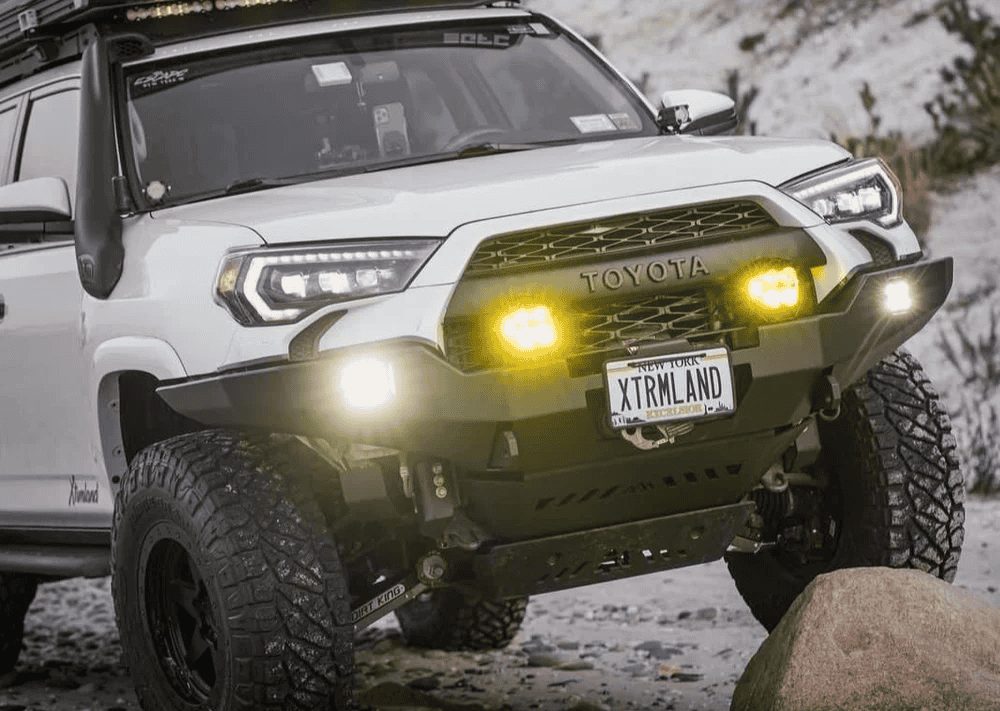Overland Vehicles

Choosing among custom adventure vehicle options starts with the trips you plan to take. Long highway stretches with occasional forest roads reward quiet cabins, efficient layouts, and dependable climate control. Extended dirt travel pushes ground clearance, suspension, approach angles, and underbody protection to the front of the list. Winter camping calls for strong insulation, moisture management, and safe heat. Desert routes favor shaded airflow, power storage, and dust control. Before picking parts, define the terrain, duration, passengers, and the gear that must come with you.
Vans deliver a rare balance of interior volume and drivability. High roof shells allow real standing height with room for a galley, fixed bed, and modular storage. Their long wheelbases help with stability and battery capacity, and the boxy interior simplifies cabinetry. All wheel drive vans with modest lifts can reach most trailheads. The tradeoff is size on tight trails and the need to manage weight distribution so handling stays predictable.
Body on frame trucks and SUVs offer rugged frames, strong axle options, and excellent approach and departure angles. They adopt canopies, toppers, bed racks, and drawer systems well, turning a utility bed into an organized gear bay. With tents or compact campers, they remain nimble on technical routes. The cost is reduced interior living space, so careful planning of sleeping platforms, water storage, and cooking surfaces is essential.
A well designed towable increases sleeping and storage capacity while the tow vehicle remains flexible for day trips. Enclosed cargo conversions can be insulated, wired for power, and fitted with modular furniture. Weight, tongue balance, and brake setup must be matched to the tow vehicle. Towables demand slow, deliberate driving on rough tracks and attention to tire selection, bearings, and spare strategies.
No matter the platform, systems turn a shell into a reliable basecamp. Build choices should emphasize serviceability, simplicity, and safety.
Modern rigs rely on a house battery bank sized by average daily consumption. Induction cooking, air conditioning, and high draw tools require larger lithium batteries and an inverter with healthy surge capacity. Solar replenishes during layovers, while alternator charging and shore power keep things topped off during travel or storage. Wire management, ventilation around inverters, and proper fusing prevent headaches later.
A practical water plan includes a protected tank, a way to monitor levels, and easy winterization. Filtered fill points and quick access for cleaning keep taste and safety high. Heat sources range from fueled air heaters to hydronic systems that also feed hot water. Cooling approaches include roof units, 12 volt options, and fans that move air smartly. Insulation, window coverings, and tight door seals reduce workload on these systems.
Heavy items live low and near the axle centerline to help handling. L tracks, smart floors, and rigid tie points keep gear in place when roads get rough. Sleep setups should support quick transitions from day mode to night mode without a gear shuffle. Safety adds recovery points, proper rated hitch gear, traction boards, a medical kit, and a fire solution sized for the space.
Think of your rig as a problem solver. The right combination should make packing simple, travel quiet and predictable, and camp routine effortless.
Short trips benefit from modular layouts that set up fast. A compact galley, a simple battery with efficient lighting and fans, and a sleep platform that does not need nightly reconfiguration will remove friction. Keep maintenance simple so the vehicle is always ready by Friday afternoon.
Long routes favor ride tuned suspension, tall sidewall tires with an appropriate load rating, and weatherproof storage. Redundant charging paths, two stage water filtration, and repairable components help when services are scarce. A clear weight budget prevents component fatigue over thousands of miles.
Families need seat and sleep counts that do not pinch shoulder space. Sliding beds, bunk concepts, and smart floors can create separate zones for travel and camp. Riders and paddlers should plan for secure wet and muddy storage, fast gear drying, and hose down areas that keep the living space clean.
When it is time to translate these choices into a real rig, working with a team that builds daily can compress the learning curve. If your path leans toward capable dirt travel with integrated living, explore overland rigs that balance clearance, storage, and power. For those who want a system by system approach, review a custom overland upfit and align suspension, electrical, water, and interior modules with your use case. Curious how a shop supports you from design through handoff and beyond, including on site orientation and camping at pickup, see why choose OZK Customs.
Based in Fayetteville in Northwest Arkansas, OZK Customs designs and builds complete custom vans, overland rigs, and towable solutions for travelers who want clear, durable systems rather than a pile of parts. The shop’s process revolves around your routes, climate, passengers, and gear list, then delivers a clean handoff at Adventure Point so you leave confident and ready to roam.
Share your route plans, season, and gear. We will translate that into a focused layout, tuned ride, reliable power, and straightforward storage so your rig feels natural from day one. When the details match your trips, the road opens up.
Tell us how you travel and what you carry. OZK Customs will translate your routes, terrain, and gear list into a purpose built van, overland rig, or towable. Share a few details and we will map a clear path from concept to keys.
ADDRESS:
6159 E Huntsville Rd, Fayetteville, AR 72701
PHONE:
(479) 326-9200
EMAIL:
info@ozkvans.com